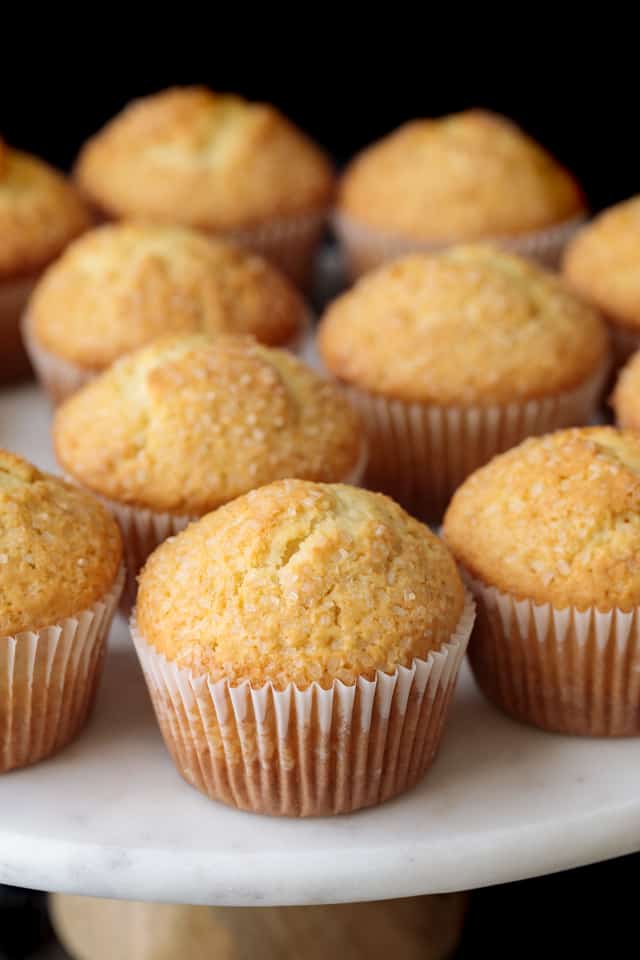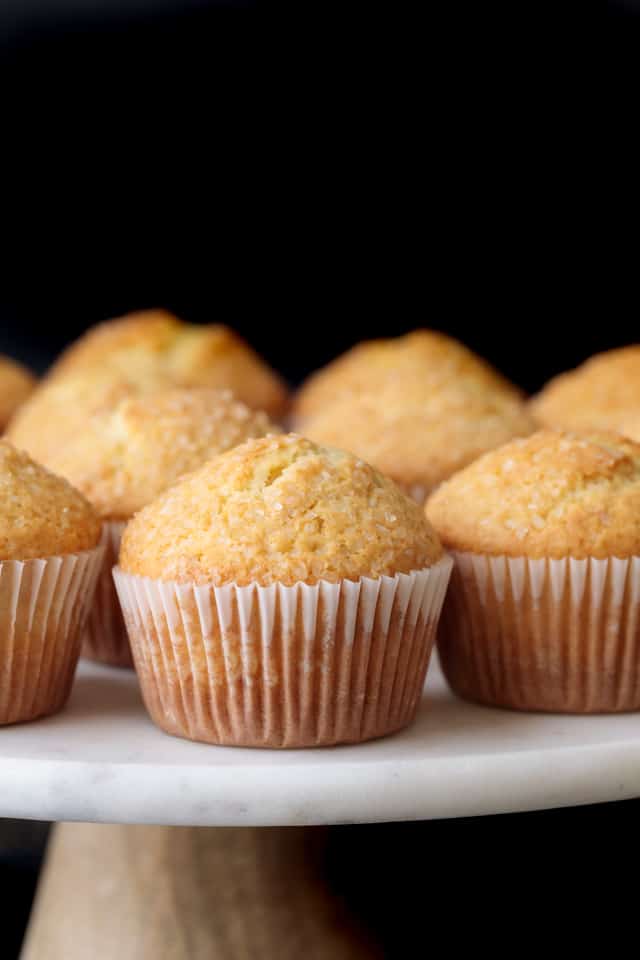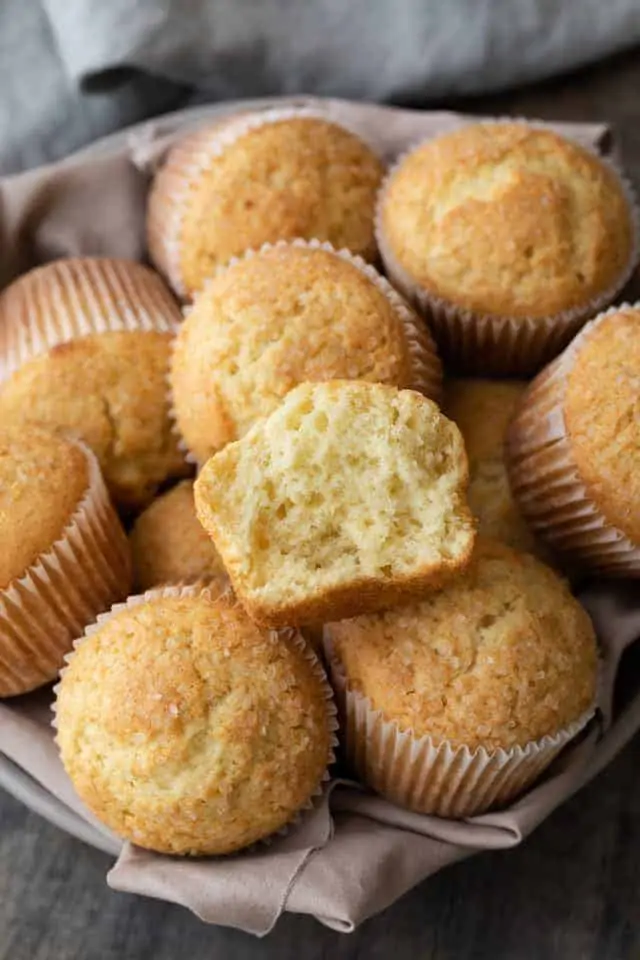This basic muffin recipe is simple yet soft and buttery. The simple muffin base is easy to make and it can be flavored with a variety of mix-ins. You’ll be sinking your teeth into buttery, soft muffins in no time!
I’m adding to my baking basics series with a plain muffin recipe that is great as it is or flavored with your favorite mix-ins. Try making cranberry orange muffins with this recipe. It’s superb!
Muffins fall into the “quick bread” category and are essentially flavored pancake batter that’s baked in muffin tins.
The traditional ratio for muffins and quick bread is 2 parts flour, 2 parts liquid, 1 part egg, and 1 part butter.
I’m not a fan of muffins baked this way because they are too soft and spongy. I prefer my muffins to be dense but soft in the middle and crisp on the top.
I started with the basic muffin ratio and adjusted the ingredients until I achieved the texture I prefer.

How to make Basic Muffins
This recipe is so quick and easy, you could do it with your eyes closed! Not really, but you know what I’m trying to get at here. You need two bowls, a whisk, and a spatula. That’s it!
The Batter – A Basic muffin batter shouldn’t be too sweet. A good rule of thumb is to use as much sugar as butter. And take care not to over mix when combining the ingredients.

Why this basic muffin recipe works
- The recipe follows the muffin method. The dry ingredients are mixed together in one bowl. The wet ingredients are mixed together in another bowl. Then, the two are mixed together just until combined.
- The right amount of liquid is used to achieve a dense muffin that isn’t dry.
- The batter is sturdy enough to support anything you’d like to add in. Blueberries, strawberries, lemon zest, and orange zest are just a few examples of mix-ins. I’ll leave more details on the variations down below.

Plain muffins call for standard pantry ingredients. You most likely have these on hand already. Let’s go over what you need…
- Flour: All-purpose flour is what I used to develop the recipe.
- Leavening: Baking powder is my choice of leavening for this muffin base.
- Salt: Because no recipe is edible without a pinch or two of salt.
- Butter: I prefer unsalted sweet cream butter when making muffins.
- Sugar: Only a little sugar is used.
- Eggs: You need 2 large eggs.
- Milk: I used whole milk for the muffins but you can also use buttermilk.

Dry Bake Just Add Milk or Water
FAQ
What does milk do to muffin?
Why do muffins need milk?
What is the purpose of milk in baking?
Are muffins better made with milk or water?
Why is milk used in muffins?
Additionally, the protein in the milk improves strength and structure of the muffin to improve tenderness of the crumb. Milk is also used as a liquid ingredient for yeast dough recipes. The milk solids weaken the connections between the gluten proteins to create a softer bread.
Are muffins good for health?
Muffins are rich in high calories, fat and sugar, muffins can be a healthy breakfast option if we are preparing in home with whole wheat flour. These excess nutrients and calories can contribute to excess weight. Banana muffins, oat muffins are rich in fiber, Chocolate muffins, Pineapple coconut muffins. Plant-based protein to your muffins to increase their nutrition.
Can you use higher-fat milk in muffins?
When using a higher-fat milk in your muffin recipe, it’s important to keep in mind that it may affect the overall consistency of the batter. You may need to adjust the amount of flour or other dry ingredients in your recipe to ensure that your batter is not too thin or too thick.
How much milk do you put in a muffin?
For example, if your muffin recipe calls for a cup of milk, you’ll go with ½ cup of milk and ½ cup of yogurt, sour cream, or buttermilk. Mix and bake as usual. Thank me later. 6.
